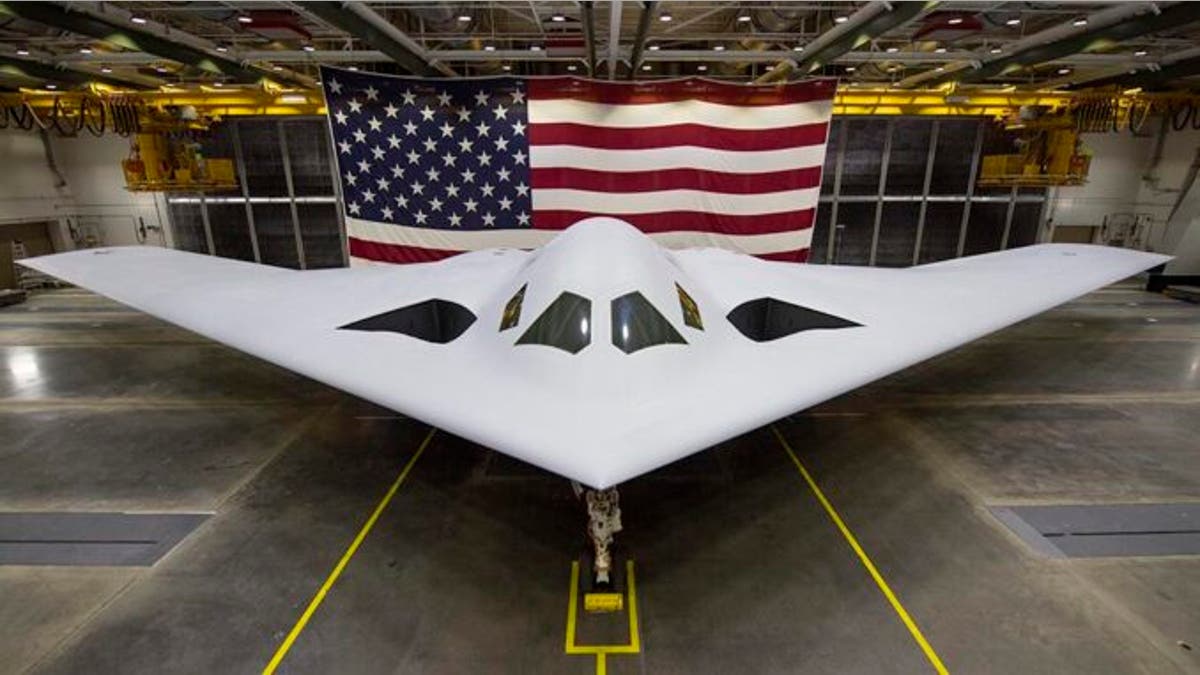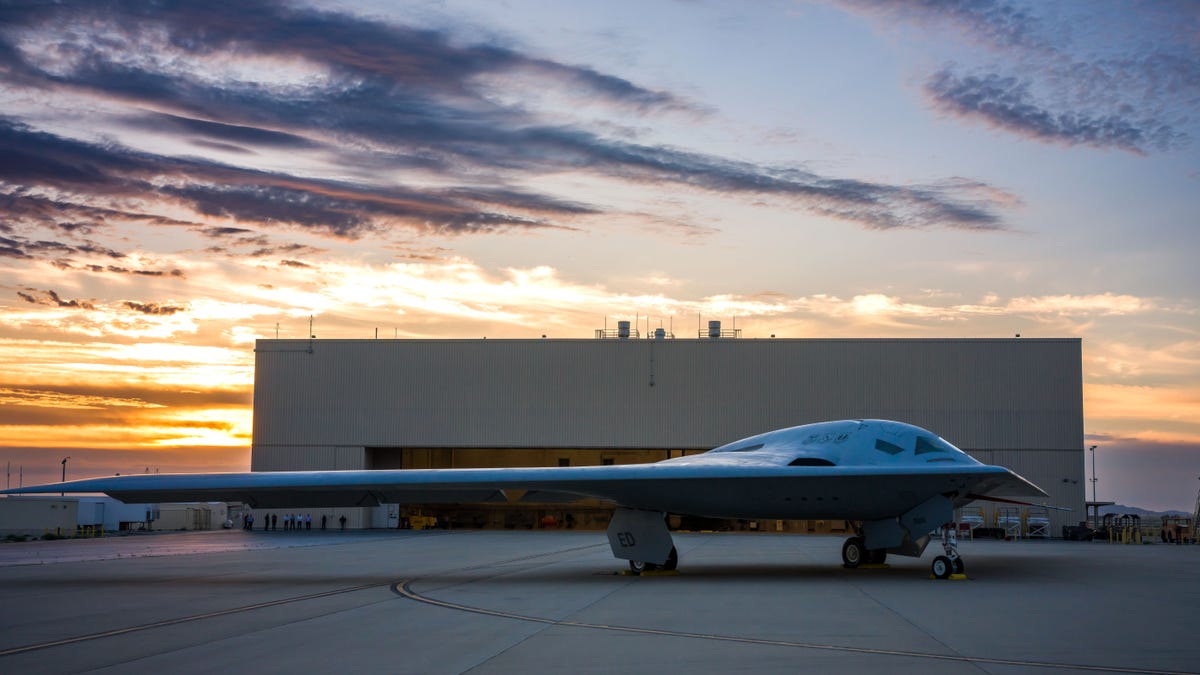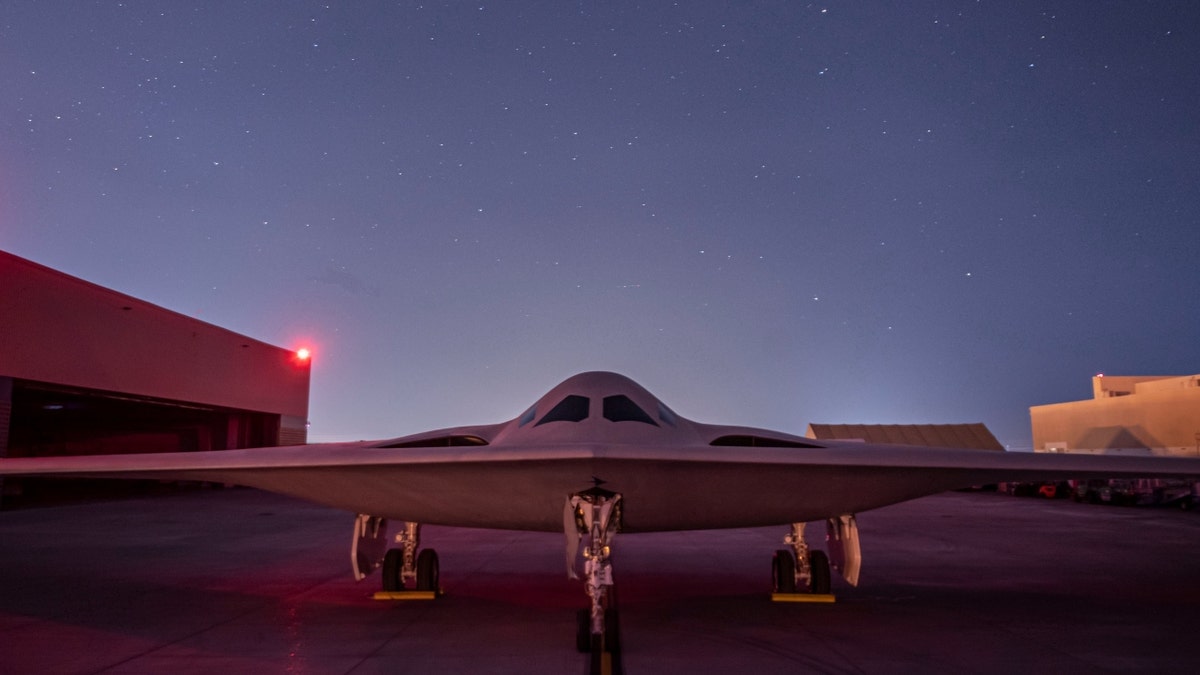This US bomber is why China suddenly wants to talk about nukes and AI
NEWYou can now listen to Fox News articles!
The Air Force’s super-secret B-21 Raider stealth bomber quietly made its first flight in California on Nov. 10, flying from the factory to Edwards AFB at not much more than tree-top level.
Yes, right before China’s President Xi Jinping visited San Francisco. All of a sudden China wants to start talks on AI and nuclear weapons.
“The leaders affirmed the need to address the risks of advanced AI systems and improve AI safety through U.S.-China government talks,” the White House stated on Nov. 15 after President Biden met with Xi.

The B-21 has cloud technology and an open architecture for continuous software upgrades. (U.S. Air Force photo)
Little wonder, for the B-21 is full of AI. It’s the only U.S. Air Force combat plane with the range and stealth to chase China’s mobile missiles and carry the deep penetrating weapons to hit underground bunkers if North Korea or Iran threatens nuclear mayhem.
ARTIFICIAL INTELLIGENCE AND US NUCLEAR WEAPONS DECISIONS: HOW BIG A ROLE?
China has nothing like this bomber. The B-21 has cloud technology and an open architecture for continuous software upgrades. The B-21’s Pratt &Whitney engines generate plenty of power for onboard AI and electronic attack.
The new bomber will take up its role in the nuclear deterrence triad in the 2030s, just as China builds up its nuclear arsenal.
For the next few months, the B-21 will be busy with baby steps in its flight test program, like retracting the landing gear during flight. I mean, you can see why they leave the gear down for very first flight. Why risk it.
As the B-21 matures through flight tests, it will move rapidly toward combat capability. Rumor has it the actual B-21 that flew recently is nicknamed “Cerberus,” after the mythical three-headed hound of the underworld. (I believe it, because the early B-2 bombers had pet names like Fire and Ice, Penny the Pig, and Christine, after the haunted car from Stephen King’s novel.)
CHINA’S XI AND BIDEN COOK UP A GIANT ‘NOTHING BURGER’ WITH ALL THE FIXINGS
What’s certain is this B-21 is not a kludged-together prototype. It’s a production-representative aircraft, and Northrop Grumman has at least six more B-21s in various stages of assembly, heading for a total production run of at least 100 and probably more.

The B-21 is a sixth-generation stealth aircraft, with a sleek design that foils radar detection. (U.S. Air Force)
The B-21 could be ready for operations in two or three years, with nuclear certification not far behind. Out in the fleet the AI prowess of the B-21 Raider will set a high bar.
And China knows it. While China’s diplomats are dangling arms control talks, China’s combat pilots are pressing ahead with AI.
“The computer can sum up all situational information and assist military personnel in making more efficient and accurate decisions,” female Chinese fighter pilot Zhang Xiao told China’s state-run Global Times in March.
EXPERTS RAISE ALARM AFTER BIDEN STRIKES AGREEMENT WITH CHINA TO SHUT DOWN FOSSIL FUELS
China anticipates all weaponry will be connected through “a fast, stable and efficient communications network, and all the vast data will likely be preprocessed, selected and highlighted by artificial intelligence before being presented to human operators, so the latter can make the best decisions for victory.”
Not so fast. The B-21 can keep the upper hand. The B-21 is a sixth-generation stealth aircraft, with a sleek design that foils radar detection. It’s also the lead component of a new family of systems, including weapons, drones and network capabilities, that will all incorporate AI.
Here’s where AI comes in. As enemy threats pop up, the B-21 might pick up an enemy radar scan pattern, use AI algorithms to evaluate it, then pass that data out to the friendly battlespace network – all while routing the plane’s sensors and communications data around the jammers.

It’s possible the B-21 may one day fly without a crew. (U.S. Air Force photo)
CLICK HERE FOR MORE FOX NEWS OPINION
Of course, jammers and electronic warfare have been around since the Vietnam era; what’s new is using AI to process signals and data onboard the aircraft and in tune with a larger network. Basically, you have a system that learns how to fight back and get ahead of enemy moves during the combat mission. The whole field is called Cognitive Electronic Warfare.
If you are flying in the B-21 that’s really good, because it opens up immediate options for dodging and weaving on your path to the target. And maybe for slinging countermeasures back at the adversary.
Powerful AI also enables the B-21 to interact with unmanned drones or other aircraft in the battlespace network. That’s why AI onboard combat aircraft creates such an important tactical offset to Chinese or Russian defenses – or anything Iran has cooked up.
CLICK HERE TO GET THE FOX NEWS APP
It’s possible the B-21 may one day fly without a crew. But for now, the winning combination will be two human pilots and all the AI they can use.
So you can see why China’s diplomats would love to talk us into stepping back from artificial intelligence in the B-21 and other military applications. Fortunately, the B-21 Raider will keep America’s AI advantage for long-range airpower.
CLICK HERE FOR MORE REBECCA GRANT
